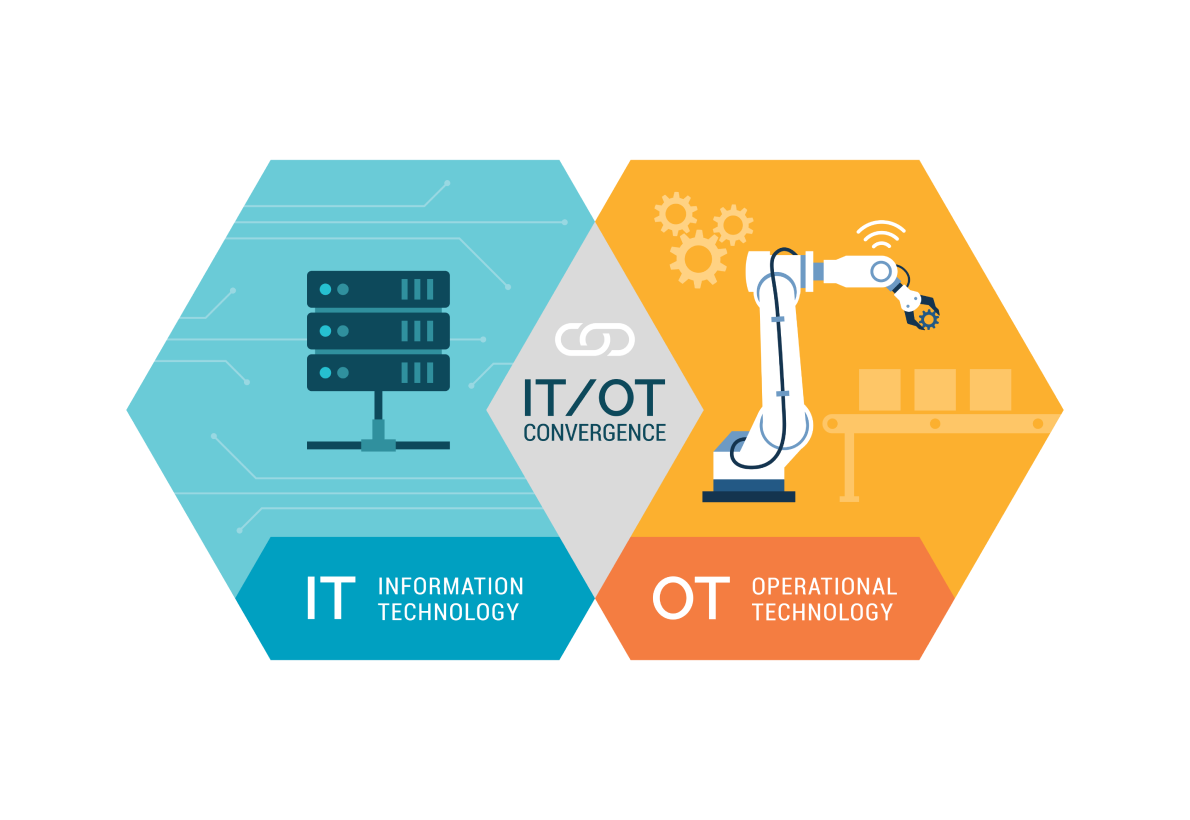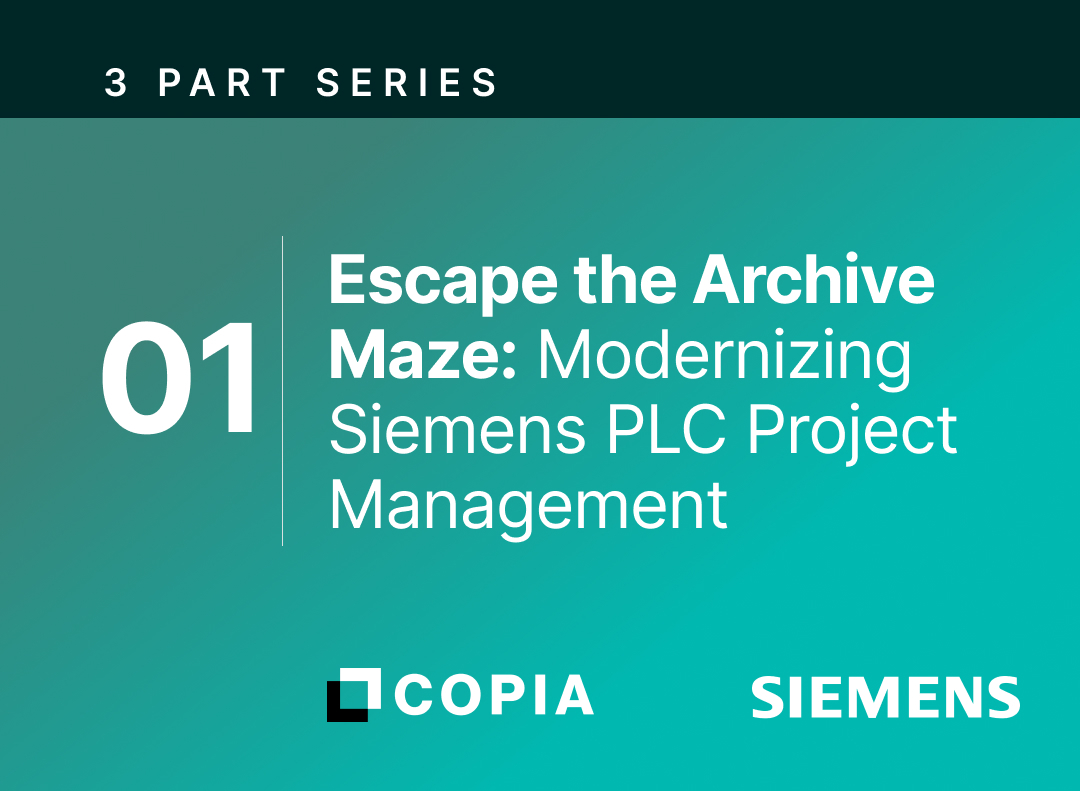As companies seek ways to consolidate technology and better leverage their siloed expertise, one topic that has gained popularity over the last few years is IT/OT Convergence.
Thisidea suggests integrating the systems that control the physical events on the factory floor (Operational Technology or OT) with the back-office hardware and software which convey and process company data (Information Technology or IT). As these systems become more interconnected, teams can share data and work together more seamlessly, improving efficiency and decision-making.
A goal with many challenges
Achieving IT/OT convergence can present several challenges, including:
- Different objectives and priorities: IT systems typically focus on business operations, while OT systems focus on controlling and automating industrial processes. The objectives and priorities differ between teams, making it difficult to align them.
- Different technologies and protocols: IT and OT systems often use different technologies, protocols, and standards, making it challenging to integrate them seamlessly.
- Different skill sets: IT and OT professionals may have different skills and expertise, making it difficult for them to work together effectively.
- Lack of standardization: The lack of standardization in the IT/OT convergence field may make it difficult for organizations to find the right solutions and technologies that suit their specific needs.
- Integration and deployment costs: The cost of integrating and deploying IT and OT systems can be high, and organizations may need to invest in new hardware, software, and staff training to achieve convergence.
Despite these challenges, companies are still drawn to connecting the IT and OT departments, especially with the advent of Industry 4.0 and the Internet of Things (IoT). Unfortunately, conversations regarding initiating IT/OT convergence frequently lean towards complex projects and tooling changes. Ideas often center around collecting and analyzing real-time manufacturing data to improve output and uptime. Other ideas include standardizing the cybersecurity processes between IT and OT networks. Due to the grand scope of such projects, IT/OT convergence often becomes a non-starter for many companies.
An easier path to success
The topic of robust data management is often overlooked in the convergence conversation; however, it is an area of IT expertise that can be easily applied to OT processes, yielding huge benefits. Git-based source control coupled with formalized review practices, a staple in traditional software development, represents an opportunity unmatched in driving OT team productivity and increased code quality.
Using Git repositories and processes as a framework for OT source control can align IT and OT. From setup, participating IT team members gain immediate visibility into crucial OT systems, their file structures, and the processes used to develop control programs. Likewise, OT teams realize the benefits of securing and tracking code changes, unlocking easy review workflows, and quick code recovery during incidents.
Modern development tools customized for industrial automation
Git-based version control is not common in industrial automation environments. The backbone of OT networks are the PLC control systems that drive manufacturing machinery. PLC systems are often written in visual languages (i.e., ladder logic and function block diagrams) using proprietary development tools. The result is a collection of local binary files on an engineer’s desktop or control devices.
Recently Copia Automation has developed new tools to unlock Git’s full power for these file formats. When using Copia, automation professionals can track all changes, visualize the file outside the development environment, and see the highlighted differences between the versions. Add in the power of Git branching and merging, and Copia delivers a source control framework that enables engineers to build code together, collaborate more effectively, and review all program changes quickly and thoroughly.
By applying workflows familiar to IT teams, control engineers can work more productively and better leverage resources to meet tight deadlines. If device backup is included in the equation, OT teams can track all code changes from initial code development through operations and maintenance. IT and OT teams will value continuous backups of vital programs and the confidence to catch unauthorized code changes before significantly impacting business.
Breaking the silos between IT and OT makes excellent business sense. It provides the ability to utilize existing resources to execute company objectives effectively. Git-based source control offers an easy path to alignment and should be considered more broadly by industrial companies. IT’s familiarity with Git, coupled with its ability to improve access control instantly and traceability makes it a low-risk solution to implement. Copia’s purpose-built tool sets enable OT teams to improve the development workflows.





